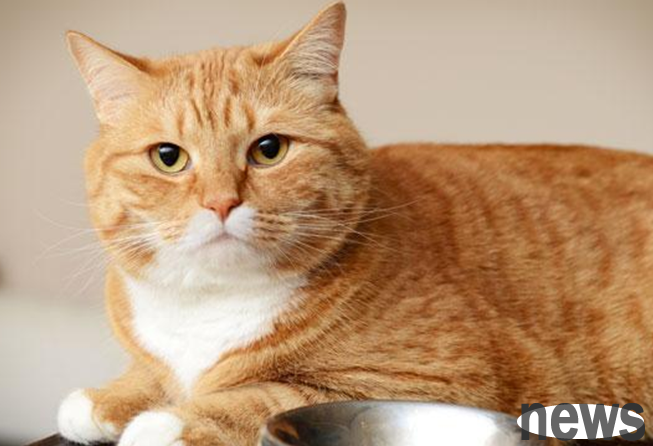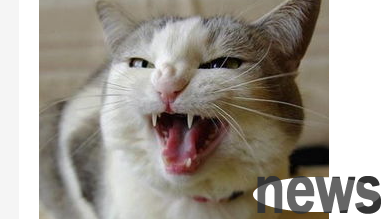The mouth is a door for cats. Many bacteria and microorganisms can be introduced from the mouth, causing internal diseases of the body. As the saying goes, diseases come from the mouth. If we achieve regular cleaning and care of the mouth, it is equ...
The mouth is a door for cats. Many bacteria and microorganisms can be introduced from the mouth, causing internal diseases of the body. As the saying goes, diseases come from the mouth. If we achieve regular cleaning and care of the mouth, it is equivalent to the first step in preventing and controlling the disease. Of course, for cats, the mouth sometimes also produces some symptoms of disease. So, what should the owners do at this time?

Gel bleeding is sometimes caused by inflammation of the gums such as gingivitis and periodontitis. If the symptoms worsen, the cat will lose appetite due to pain in the gums and lose weight day by day. In addition, bleeding gums caused by rat poisoning also exists. Therefore, you should observe the cat's condition more carefully.
1. Gingivitis
If you find that the kitten is depressed and sluggish, unwilling to eat, and even if you open your mouth, you will find that the gums are dark red, and there are symptoms such as edema, bad breath, drooling, and difficulty chewing. It can almost be judged that the kitten has inflammation of gums. Cats can infect gingivitis by gingivitis due to tartars, foreign bodies or bacteria. To prevent cats from suffering from gingivitis, in addition to helping their beloved cats brush their teeth regularly, once they find abnormal gums, they should go to the pet hospital immediately for help from doctors.
Pacific Fashion Network Zone
Severe gingivitis may even cause cats to die. In fact, it is not surprising. Due to the sensitive nature of cats, they feel pain in their mouths, so they will naturally refuse to eat. The result can be imagined. Oral health care for cats is very necessary. Cat owners should usually choose cat food that has a tooth cleaning effect for cats. Under the conditions that cats can cooperate, select appropriate oral health care products, and go to the pet hospital regularly to check the cat's oral status by a pet doctor.
2. Periodontitis
When gingivitis further invades around the root of the tooth, it turns into periodontitis. Clinical symptoms include cats having a large amount of time, eating intermittently, not daring to eat hard food, difficulty chewing, and occasionally touching the food and causing severe pain and screaming in the lesion area. An unpleasant odor comes out of the mouth. The affected cat resists oral examination. During oral examination, there are tartars attached to the teeth, loose teeth, congestion and swelling of teeth, and obvious pain when the instrument touches the affected teeth.
How to treat it?
1. Completely remove tartars, and remove teeth that have necrotic and toothless functions.
2. Rinse the mouth with disinfectant, 0.1% potassium permanganate water or 3% boric acid water. Then coat 2% iodine glycerol or tin powder and ice boron powder. For tooth-heeled hyperplastic granuloma, 10% silver nitrate can be used for corrosion.
3. Supportive therapy. For cats with reduced appetite, glucose and compound saline should be intravenously infused with oral vitamin B preparations.
4. Give high-nutrition liquid food.
The tissue supporting the teeth is damaged and the roots are exposed. Gums are red, swollen, bleeding, loose teeth, and eventually fall off. If this happens, the cat needs to be treated by a doctor. In addition, it is also important to remove tartar with a toothbrush or gauze. Check the cat's teeth carefully.

3. Rot poisoning
Rat poison contains warfarin ingredients. If a cat accidentally eats it, it can also cause bleeding gums. Rats that have eaten rat poison can also lead to poisoning. In this case, the doctor needs treatment, so take the cat to the hospital as soon as possible. In addition, paying attention to the storage of drugs is also very important to avoid such accidents.
Rat poisoning is poisoned, and the treatment methods vary according to the ingredients. Here are several common treatment methods.
1. Antuo Rat poisoning
This is a powerful rat poison, white, odorless crystalline powder, causing increased permeability of the lung capillaries, and a large amount of plasma enters the lung tissue, resulting in pulmonary edema. If a cat eats for a few minutes to several hours, vomits, foams on his mouth, then diarrhea, coughs, breathing difficulties, depression, and cyanosis of the visual mucosa. Foamy blood-colored mucus flows out of the nostrils. Generally, coma and lethargy occur 10 to 12 hours after intake, and a few die within 2 to 4 hours after intake. There is no specific antidote for this poisoning, and methods such as inducing vomiting, gastric lavage, diarrhea and diuresis can be used.
2. Organic fluoride-like rat poison poisoning
This is a highly toxic drug. After taking it, the sick animals are restless, vomit, hypergastrointestinal function, running around, barking, and paroxysmal spasm of the whole body, lasting about 1 minute and finally die.
The treatment can be treated with 0.1-0.2 grams of body weight per kilogram. The first dosage is 1/2 of the total daily amount. The remaining 1/2 amount is divided into 4 parts, and the injection is once every hour. Cooperate with vomiting and gastric lavage. Feeding cats with raw egg whites is conducive to protecting the digestive tract mucosa. Intravenous injection of calcium gluconate 5-10 ml is beneficial.